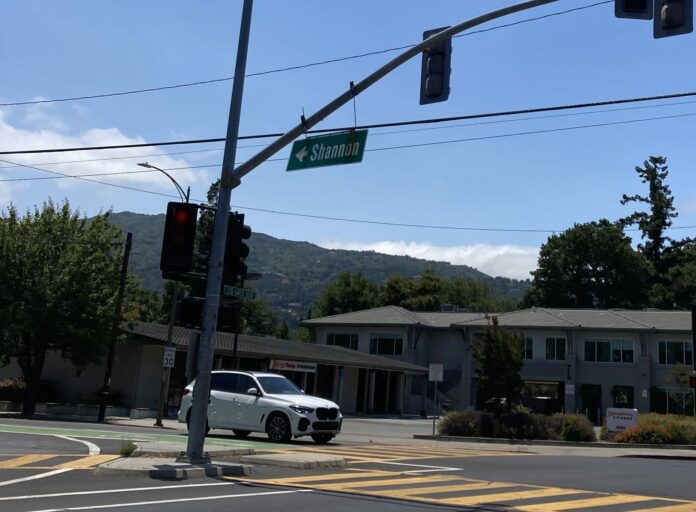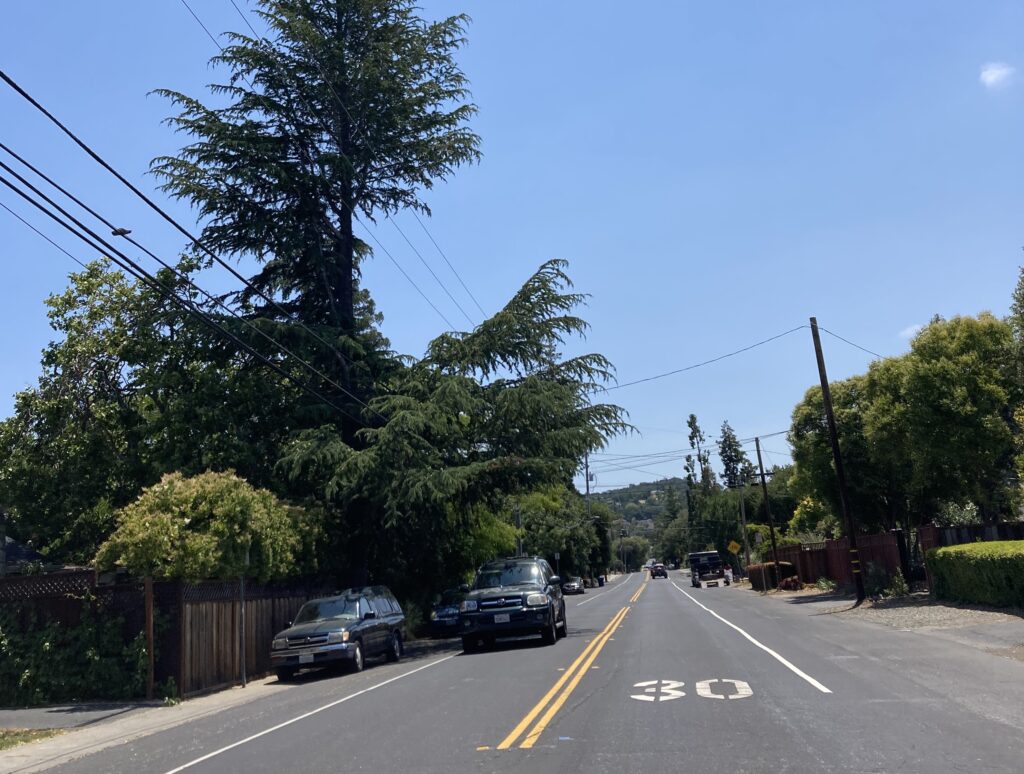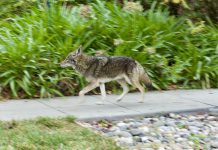
Los Gatos has been trying to hang on to environmental grants for a bike path along Shannon Road while still appeasing neighbors who didn’t support the designs and felt like the Town hadn’t been listening to their concerns.
The Town had secured a federal $940,100 Vehicle Emissions Reductions Based at Schools gift and a Transportation Fund for Clean Air offer worth $174,250.
Local planners managed to get the deadlines extended (to Jan. 31, for the former and to the following June 30, for the latter), and, after outcry from local residents (who felt the plan removed a rural feel from the route by taking away greenspace, among other grievances), Los Gatos organized a community meeting.
The bill for the June 1 meeting was stacked with top planning brass: Nicolle Burnham, the director of public works, Gary Heap, the new town engineer, Mike Vroman, senior traffic engineer, Tracy Wang, transportation and mobility manager, Janice Chin, assistant civil engineer, Corvell Sparks, assistant civil engineer and Meredith Johnston, administrative technician.
The Town’s presentation included colorful pictures of trees—Chinese pistache, Shumard oak and red maple—that could be planted, and went into detail about proposed buffer concessions.
‘I want to thank the town engineers for working hard to produce the updated plans’
—Helen Sun, resident
Leading up to the meeting, residents had been expressing their dismay at earlier concepts.
One even said they’d lost sleep over the issue.
But just hours after the get-together, the Shannon Road community began to sing a different tune.
At 3:15am, Ryan Rosenberg fired off an email thanking Burnham and Heap for hearing them out.
“It was a pleasure to meet both of you tonight at the Shannon Road project meeting,” he said. “Both of you showed a great demeanor tonight.”

However, he still requested a reduced bike buffer, asking for it to be dropped down to two feet.
Los Gatos has been seeking to roll out improved pedestrian and cyclist infrastructure on the collector street that serves three nearby schools.
And some Council members, including Mayor Maria Ristow—an avid cyclist—have been eager to see upgrades realized.
An early concept included bollards, which some people in the area didn’t find to their aesthetic taste. While these—which have been used to great effect in other parts of town—haven’t part of the project for months, they remained a symbol, for some, of how the Town had seemed, to them, to be pursuing a green agenda without being flexible to the needs of the people who actually inhabit the area.
But the day after the meeting, it was clear planners had turned a corner, and the bollard issue was now in the rearview mirror.
Helen Sun was pleased with the vegetation in the new plans.
“I want to thank the town engineers for working hard to produce the updated plans and options,” she wrote. “I think all residents can agree that it is amazing to see the green/tree spaces added.”
Mark Bony said the community meeting was “well organized” and “had great engagement” from attendees.
On June 20, Council was presented with a report that included earlier choices and a new possibility.
‘We were wrong’
—Maria Ristow, mayor
The so-called “Modified Option 1” kept sidewalks at five feet, reduced the bike lane from six feet to five, dropped the painted bike buffer from three feet (as proposed in a couple of the designs) to 18 inches (Option 1, which many residents preferred, had no buffer for cyclists), offered a 3-4-foot strip of vegetation, provided parking spaces on the south side of the street, and introduced a six-inch buffer next to property lines.
“This Modified Option 1 attempts to meet the requests of the Shannon Road residents and other community members while still meeting the Town Council’s direction,” Heap said. “I think this is kind of an effort here to show what we can do when we get Council direction, we get community input, and come up with a plan that meets both needs. It balances good engineering design and community interest, provides bike lanes and sidewalk—as in the original plans—maximizes the placement of trees (which was a Council directive), reduces that bike lane buffer to minimum standards, and, again, based on the requests from the community, provides that six-inch buffer at the back of walk.”
Construction is expected to begin in Spring 2024.
Several residents waited hours for the item to come up at Council, and when they spoke, they shared positive comments.
Ristow thanked staff for their hard work, and, in particular, for holding a public meeting that was clearly quite helpful.
“And I do want to thank the residents for, you know, trying to understand what could be done on your street, but also for wanting to preserve what you had, and wanting to find a better outcome,” she said. “I will say, frankly, I received some really angry emails, but every person I met with in person was respectful. And even when we didn’t agree, we understood what we were talking about. And I think it was a great learning experience for everyone.”
Ristow said she still believes that bollards make a lot of sense for larger roads, and she admitted that just removing this feature from the Shannon Road design wasn’t enough to assuage residents’ concerns, as Town officials had originally assumed.
“We were wrong,” she said. “Hopefully we’ve learned a lot, so any other project starts out a lot more smoothly.”
A motion to approve Modified Option 1 was approved unanimously just before midnight.









